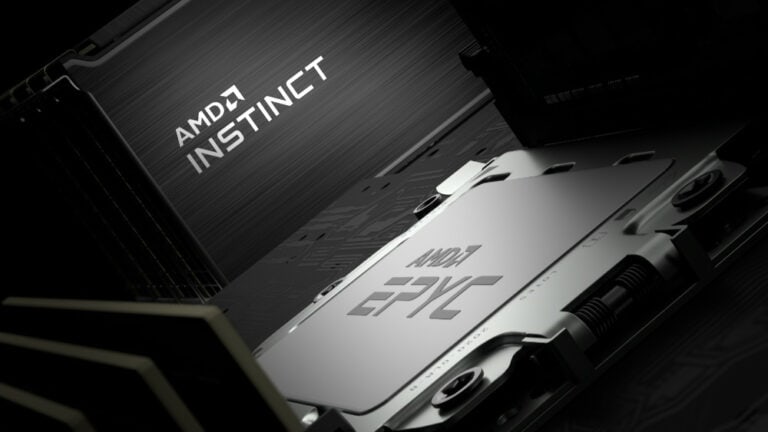Microsoft is going to offer Azure clusters with AMD’s MI300X chip. The move means Microsoft will no longer rely on Nvidia to run powerful AI workloads.
More details will follow during Microsoft Build next week, reports Reuters. Microsoft will simultaneously reveal more about a new line of Cobalt 100 processors within its own data centers, which Snowflake already uses.
MI300X
The MI300X launched in December and showed impressive performance against Nvidia’s H100. Anyone running an AI model daily for generating outputs (i.e. inferencing) can expect about 40-60 percent faster performance than with the H100, a figure Nvidia challenged because AMD’s own GPUs were not being used to their full potential in AMD’s benchmarks. Again, however, AMD claimed the same performance gains with the adjusted benchmarks.
AMD previously expected to bring in 2 billion with the MI300 series. The company now predicts a doubling of that previously stated amount.
The feasibility of switching to AMD will vary by cloud customer. For example, those who work extensively with Nvidia’s own AI platform and have optimized everything for CUDA (the architecture fundamental to Nvidia hardware) will experience a lot of friction. That kind of lock-in is absent for anyone using other services such as TensorFlow, PyTorch and/or Microsoft’s Azure AI Studio. The price for GPU usage is as yet unknown.
AMD advance
AMD is also in demand among other cloud vendors. The company offers both GPUs and CPUs, with its portfolio for data centers consisting of Epyc processors. Recently, OVHcloud announced that it is making new servers available with 4th generation Epyc chips. Although this chip generation dates back to late 2022, they are still competitive with more recent Intel Xeons.
OVHcloud offers dual-socket configurations that make up to 256 cores available to customers. If we judge purely on core count, Intel can top that with up to 288, but those are much less powerful efficiency cores and thus not comparable to Epyc. A duo of Epyc chips on a single motherboard is currently the most powerful CPU configuration possible. Either way, it is notable that OVHcloud is not choosing a newer Intel chip to expand its offering. AMD has had to wait a long time to receive equal treatment from both cloud players and other vendors, despite being very competitive in terms of performance for quite some time.
Possibly Intel’s price tag is too hefty for the performance it offers in return. Incidentally, the company has been feeling AMD’s hot breath for some time. Already four years ago, for example, the power consumption edge of Epyc versus Xeon was impressive enough that Intel put pressure on an unnamed OEM to ensure the exact numbers were not shared by the reviewer from ServeTheHome.
It shows once again that AMD is on the rise in the processor market. Its market share in servers is greater than ever at 23.6 percent. More strikingly, it also brings in a third of the revenue. Also on desktops, AMD’s market share is nearly a quarter with 23.9 percent. There, the catch-up versus Intel weakened somewhat in early 2022, when it had to prioritize data center CPUs with the introduction of new chip architectures. Now it also seems that OEMs are tacking on. For example, a future version of the Dell XPS 16 would also be available with AMD hardware.
Also read: Dell may provide new XPS 16 laptop with AMD processor
